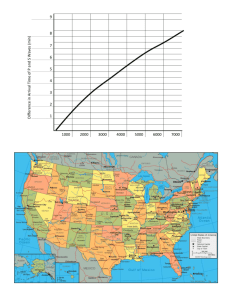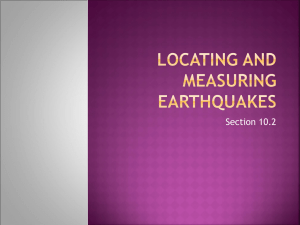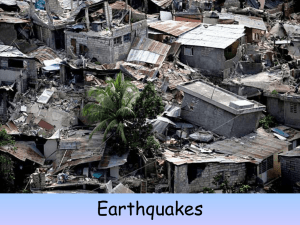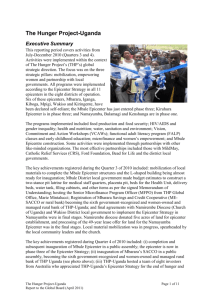Finding the epicenter
advertisement
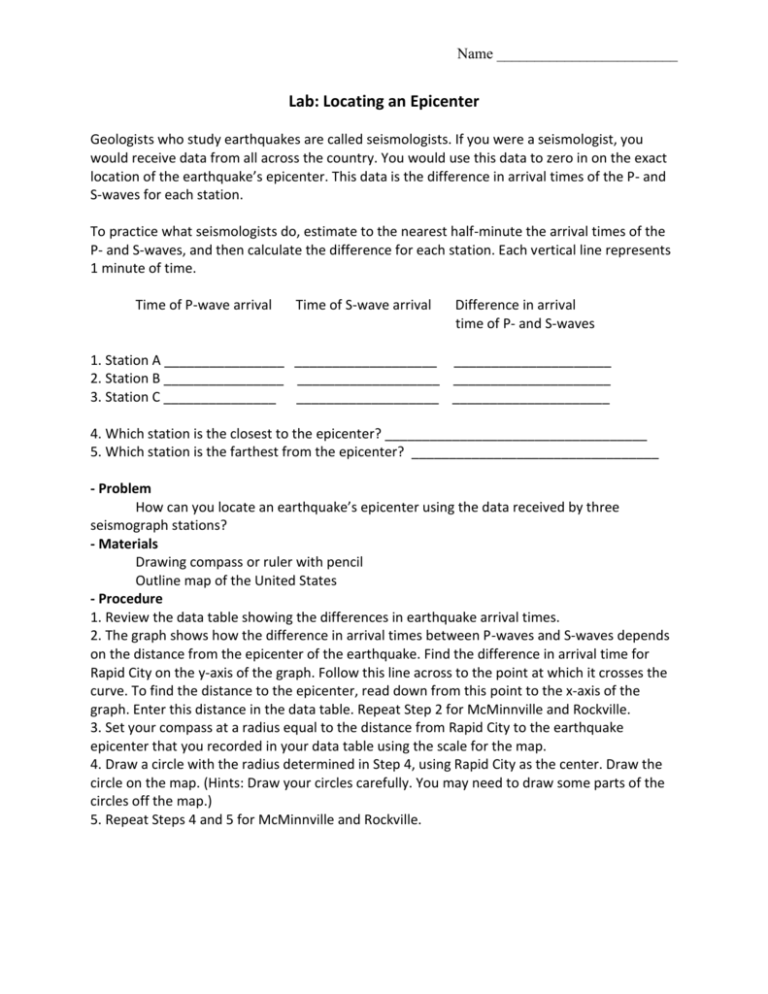
Name ________________________ Lab: Locating an Epicenter Geologists who study earthquakes are called seismologists. If you were a seismologist, you would receive data from all across the country. You would use this data to zero in on the exact location of the earthquake’s epicenter. This data is the difference in arrival times of the P- and S-waves for each station. To practice what seismologists do, estimate to the nearest half-minute the arrival times of the P- and S-waves, and then calculate the difference for each station. Each vertical line represents 1 minute of time. Time of P-wave arrival Time of S-wave arrival Difference in arrival time of P- and S-waves 1. Station A ________________ ___________________ _____________________ 2. Station B ________________ ___________________ _____________________ 3. Station C _______________ ___________________ _____________________ 4. Which station is the closest to the epicenter? ___________________________________ 5. Which station is the farthest from the epicenter? _________________________________ - Problem How can you locate an earthquake’s epicenter using the data received by three seismograph stations? - Materials Drawing compass or ruler with pencil Outline map of the United States - Procedure 1. Review the data table showing the differences in earthquake arrival times. 2. The graph shows how the difference in arrival times between P-waves and S-waves depends on the distance from the epicenter of the earthquake. Find the difference in arrival time for Rapid City on the y-axis of the graph. Follow this line across to the point at which it crosses the curve. To find the distance to the epicenter, read down from this point to the x-axis of the graph. Enter this distance in the data table. Repeat Step 2 for McMinnville and Rockville. 3. Set your compass at a radius equal to the distance from Rapid City to the earthquake epicenter that you recorded in your data table using the scale for the map. 4. Draw a circle with the radius determined in Step 4, using Rapid City as the center. Draw the circle on the map. (Hints: Draw your circles carefully. You may need to draw some parts of the circles off the map.) 5. Repeat Steps 4 and 5 for McMinnville and Rockville. Name ________________________ Name _______________________ _ Data City Difference in P- and S-wave Arrival Times Distance to Epicenter Rapid City, South Dakota 2 min, 20 sec McMinnville, Tennessee 40 sec Rockville, Maryland 2 min Savannah, Georgia _ Analyze and Conclude 1. Which city on the map is closest to the earthquake epicenter? 2. How far, in kilometers, is this city from the epicenter? 3. In which of the three cities listed in the data table would seismographs detect the earthquake first? 4. In which of the three cities listed in the data table would seismographs detect the earthquake last? Name ________________________ 5. When you are trying to locate an epicenter, why is it necessary to know the distance from the epicenter for at least three recording stations? 6. What happens to the difference in arrival times between P- and S-waves as the distance from the earthquake increases? 7. Working as a seismologist, you find the epicenter of many earthquakes in a region. What features of Earth’s crust would you expect to find in this region? + Give one plus about this lab activity. - Give one minus about this lab, and a suggestion to make this activity better. I Give one interesting thing you have learned from doing this lab.

